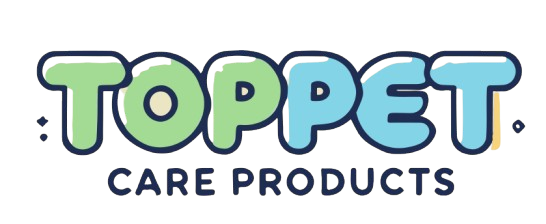When it comes to keeping your cat happy and healthy, one of the most important things you can do is provide them with the right nutrition. Choosing the best cat food for your feline companion can be overwhelming, as there are so many options available. From dry kibble to wet food, grain-free options, and even raw diets, finding the right balance of nutrients is crucial for your cat’s well-being.
In this guide, we’ll break down the basics of cat nutrition and help you understand what to look for when choosing the best cat food. Whether you have a playful kitten, an adult cat, or a senior feline, this article will help you make informed decisions about their diet.
1. Understanding Your Cat’s Nutritional Needs
Cats are obligate carnivores, which means they rely on a diet primarily made up of animal-based proteins. Unlike dogs, which are omnivores and can thrive on a mixed diet of plants and meat, cats need high levels of protein to support their muscle function, energy levels, and overall health. The essential nutrients that cats need include:
- Protein: High-quality protein from animal sources (like chicken, turkey, or fish) is critical for muscle maintenance and energy.
- Taurine: An amino acid found in animal tissue, taurine is essential for heart health, vision, and reproductive function in cats.
- Fats: Healthy fats, especially omega-3 and omega-6 fatty acids, help maintain your cat’s skin, coat, and brain function.
- Vitamins and Minerals: Vitamins like A, D, and B, as well as minerals like calcium and phosphorus, are essential for a cat’s overall health.
- Water: Cats naturally have a low thirst drive, so it’s essential to ensure they get enough water, especially if they primarily eat dry food.
2. Types of Cat Food
There are three main types of cat food: dry, wet, and raw. Each has its advantages and disadvantages, and the best option for your cat will depend on their individual needs and preferences.
Dry Cat Food (Kibble)
Dry cat food is one of the most popular options due to its convenience and long shelf life. Kibble is easy to store, doesn’t spoil quickly, and can be left out for cats to graze on throughout the day. However, dry food often contains higher levels of carbohydrates and fillers, which may not be ideal for all cats.
Pros:
- Convenient and affordable.
- Helps with dental health by reducing plaque buildup.
- Long shelf life.
Cons:
- Lower moisture content, which can lead to dehydration if your cat doesn’t drink enough water.
- May contain more carbohydrates and fillers.
Best for: Cats who are good at drinking water and need a convenient food option.
Wet Cat Food (Canned)
Wet food is often recommended for cats because it has a higher moisture content, which can help keep them hydrated. It’s typically made from higher-quality ingredients, and many cats find it tastier than dry food.
Pros:
- High moisture content helps prevent urinary tract issues and dehydration.
- Often more palatable for picky eaters.
- Usually contains fewer carbohydrates.
Cons:
- Can spoil quickly if left out.
- More expensive than dry food.
- Requires more frequent feeding due to smaller portion sizes.
Best for: Cats that need more hydration or are picky eaters.
Raw Cat Food Diet
A raw food diet mimics what a cat might eat in the wild, consisting of raw meat, bones, and organs. Some cat owners believe that feeding raw provides the most natural and biologically appropriate diet for felines.
Pros:
- High in animal protein, with minimal processing.
- Can improve coat quality and energy levels.
- May reduce food sensitivities and allergies.
Cons:
- Risk of contamination with bacteria like Salmonella.
- Requires careful preparation and handling.
- Can be expensive and time-consuming.
Best for: Owners who are committed to providing a biologically appropriate diet and can manage the risks of handling raw food.
3. Choosing the Right Food for Your Cat’s Age and Health
Cats have different nutritional needs depending on their age and health status. It’s important to choose food that is specifically formulated for your cat’s life stage and any health issues they may have.
Kitten Food
Kittens need food that is high in calories and protein to support their rapid growth and development. Kitten-specific formulas provide the right balance of nutrients for strong bones, teeth, and muscles.
Tip: Look for kitten food that includes DHA, an essential fatty acid that supports brain and eye development.
Adult Cat Food
Once your cat reaches adulthood (usually around one year of age), they will need food that maintains their weight and provides balanced nutrition for daily activities. Adult cat food is formulated to meet the needs of a fully grown cat without the excess calories needed during kittenhood.
Tip: Make sure the food contains plenty of high-quality animal protein and minimal fillers like corn or wheat.
Senior Cat Food
As cats age, they may develop health issues such as arthritis, kidney disease, or obesity. Senior cat food is designed to support aging cats with reduced fat and calories, as well as added supplements like glucosamine for joint health.
Tip: Talk to your vet about any specific dietary needs your senior cat may have, especially if they have chronic health conditions.
4. Grain-Free vs. Regular Cat Food
Grain-free diets have become popular in recent years, but are they really better for cats? While cats don’t need grains in their diet, most can digest grains like rice and oats without issue. The key is to focus on the quality of the ingredients rather than whether or not the food contains grains.
When to Consider Grain-Free:
- If your cat has a grain allergy or sensitivity.
- If your vet recommends a grain-free diet for a specific health condition.
However, grain-free foods often replace grains with other carbohydrate sources like potatoes or peas, which may not be any better for your cat.
Tip: If your cat doesn’t have any specific health issues, choosing a food with high-quality animal proteins is more important than avoiding grains.
5. Reading Labels and Ingredients
When choosing the best cat food, it’s important to read the ingredient list carefully. Look for foods that list high-quality animal proteins (like chicken or salmon) as the first ingredient. Avoid foods that contain a lot of fillers, artificial preservatives, and by-products.
Key Ingredients to Look For:
- High-quality animal proteins.
- Omega-3 and omega-6 fatty acids.
- Taurine for heart and eye health.
Ingredients to Avoid:
- Fillers like corn, soy, or wheat.
- Artificial flavors, colors, and preservatives.
- Meat by-products (unidentified meat sources).
6. Top Cat Food Brands
Here are a few trusted cat food brands known for their high-quality ingredients and balanced nutrition:
- Hill’s Science Diet – Offers formulas tailored to specific life stages and health conditions.
- Royal Canin – Known for its veterinary-backed recipes for different breeds and health concerns.
- Blue Buffalo – Offers grain-free and limited ingredient options for cats with sensitivities.
- Wellness – Known for using natural, high-quality ingredients with no fillers or artificial additives.
- Purina Pro Plan – Offers a wide variety of formulas for cats of all life stages and dietary needs.
Conclusion
Choosing the best cat food is one of the most important decisions you’ll make for your feline companion. By understanding your cat’s nutritional needs, selecting food appropriate for their life stage, and reading labels carefully, you can ensure your cat gets the right balance of nutrients to stay healthy and happy. Always consult with your vet if you’re unsure about your cat’s diet, and remember that the best food for your cat is one that supports their individual needs.

